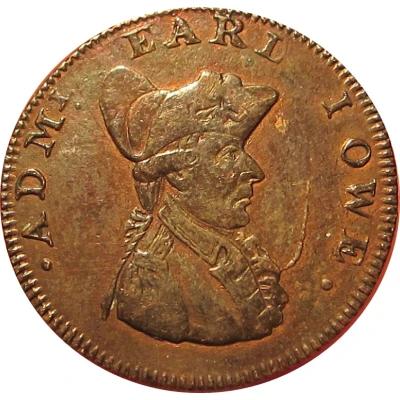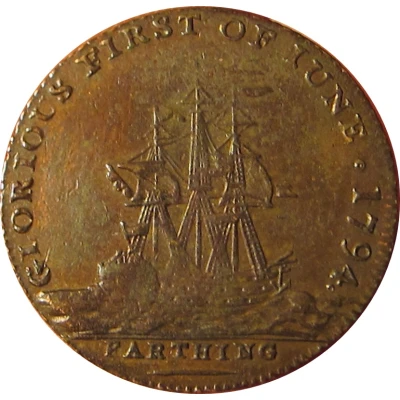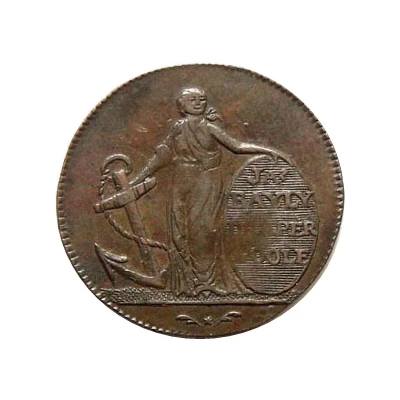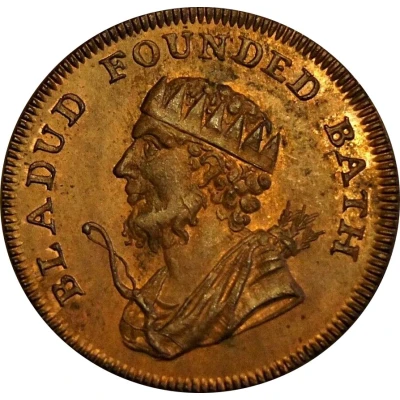
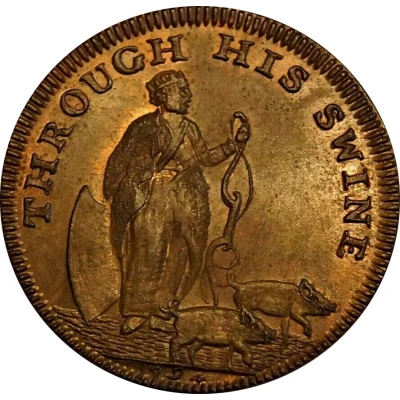

© adamp9
1 Farthing Somerset - Bath / F. Heath
1794 year| Copper | 4.65 g | 24 mm |
| Issuer | United Kingdom (United Kingdom, British Overseas Territories and Crown Dependencies) |
|---|---|
| Type | Token |
| Year | 1794 |
| Value | 1 Farthing (1⁄960) |
| Currency | Conder tokens (1787-1797) |
| Composition | Copper |
| Weight | 4.65 g |
| Diameter | 24 mm |
| Thickness | 1.2 mm |
| Shape | Round |
| Technique | Milled |
| Orientation | Coin alignment ↑↓ |
| Demonetized | 1797 |
| Updated | 2024-10-09 |
| Numista | N#89359 |
|---|---|
| Rarity index | 87% |
Reverse
Bladud wearing his crown, standing facing right, holding his bow with shield set on ground, driving two swine/pigs/hogs at feet to right. Date squeezed in small exergue. Lettering around, long toothed border
Script: Latin
Lettering:
THROUGH HIS SWINE
1794
Edge
Plain
Comment
This was issued by F. Heath who was an ironmonger, brazier and cutler with a business in Bath. Bladud was the eighth King of the Britons who is thought to have founded the baths in 863 B.C.Bladud was a mythological prince who had leprosy. He was driven from the royal court on account of his illness. Wandering around England, he eventually became a herder of pigs, until they too contracted leprosy. Eventually, Bladud stumbled across a hot spring, bathed in it and was cured of his illness. He built the city of Bath upon becoming its king.
Interesting fact
One interesting fact about the Token 1 Farthing (Somerset - Bath / F. Heath) 1794 from United Kingdom is that it was issued during a time of severe coinage shortages in the late 18th century. The British government was unable to produce enough coins to meet the demands of the growing economy, leading to the issuance of private tokens, like this one, by local merchants and traders. These tokens were used as a substitute for official currency and were often backed by the merchant's personal credit. This particular token was issued by F. Heath, a merchant in Bath, Somerset, and features an image of a shield with a crown on top, surrounded by foliage. Despite being made of copper, which was a relatively cheap metal at the time, the token was still considered valuable and was widely accepted in local trade.
